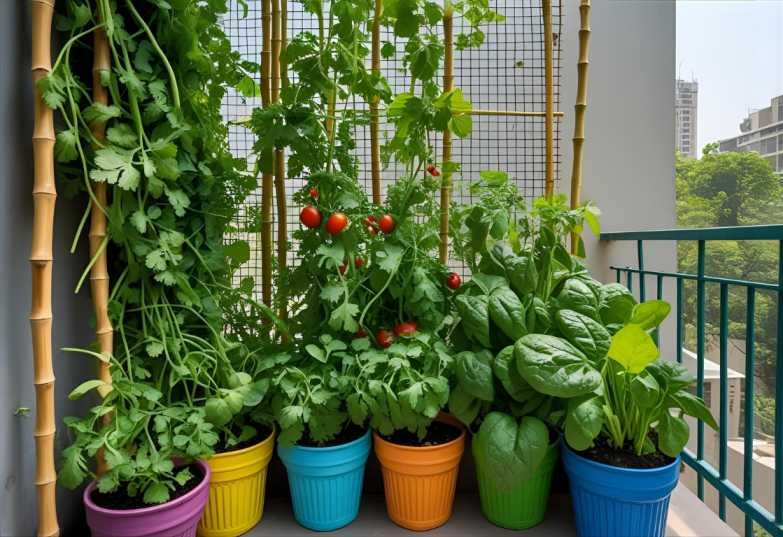Introduction
Have you ever dreamed of harvesting fresh vegetables just outside your kitchen window? With simple balcony vegetable gardening, you can turn even a tiny urban space into a lush, productive oasis. Whether you live in a compact apartment or a high-rise flat, growing your food is easier and more rewarding than you might imagine.
In this guide, you’ll discover simple, budget-friendly strategies to plan, plant, and maintain your balcony garden. From choosing the best containers to selecting vegetables that thrive in limited sunlight, these tips will help you create a sustainable and beautiful space.
DIY balcony vegetable garden ideas not only save money but also bring a sense of calm and satisfaction to your daily life. Imagine picking crisp lettuce or juicy tomatoes just steps away from your kitchen.
This article is for educational and informational purposes only. Always follow local guidelines and use safe gardening practices. For more official tips and seasonal guidance, you can visit the National Horticulture Board of India.
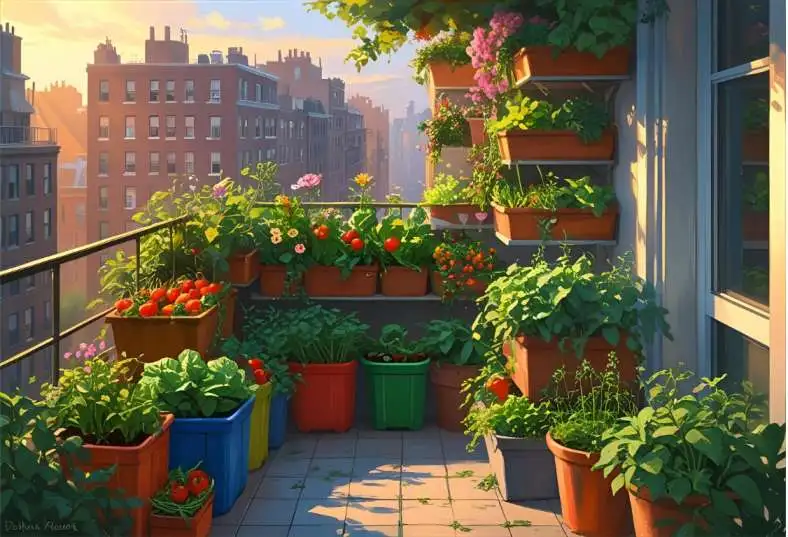
Table of Contents
Planning Your Balcony Garden Space
Creating a thriving balcony garden starts with smart planning. Before you buy seeds or containers, take time to understand your space. With the right approach, your balcony gardening plan can be practical, safe, and deeply rewarding.
Assess Sunlight and Microclimate
Every balcony has a unique combination of sunlight, shade, and airflow. Spend a few days observing when your balcony gets direct sun. Most vegetables need at least 4–6 hours of sunlight daily to grow well. If your balcony faces north or is shaded by other buildings, choose leafy greens or herbs that can tolerate lower light.
Also, think about wind exposure. Tall buildings can create strong drafts that dry out soil and stress plants. Consider adding bamboo screens or sturdy railing planters to protect your garden.
Careful planning will help your balcony garden thrive and prevent common frustrations like stunted growth or wilting plants.
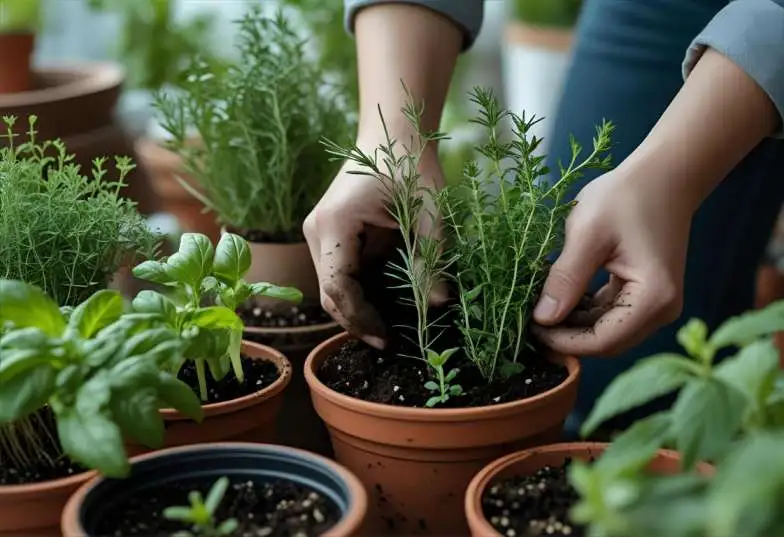
Choosing the Right Containers
Picking the right containers is just as important as choosing your vegetables. Look for pots and planters with good drainage holes so roots don’t sit in water. Lightweight materials like plastic or fabric grow bags are perfect for balconies because they’re easy to move and won’t put too much weight on your floor.
If you’re tight on space, try vertical gardening solutions. Hanging baskets, tiered shelves, or wall-mounted planters let you grow more in less space.
No matter which containers you choose, make sure they match your balcony’s style and your budget. Simple buckets or recycled crates can also work beautifully when arranged neatly.
With thoughtful preparation and creative solutions, your vegetable garden can fit perfectly into any urban balcony.
Selecting Vegetables Suitable for Balconies
One of the most exciting parts of exploring DIY balcony vegetable garden ideas is deciding what to grow. The best vegetables for balconies are compact, fast-growing, and easy to care for, even if you’re a beginner.
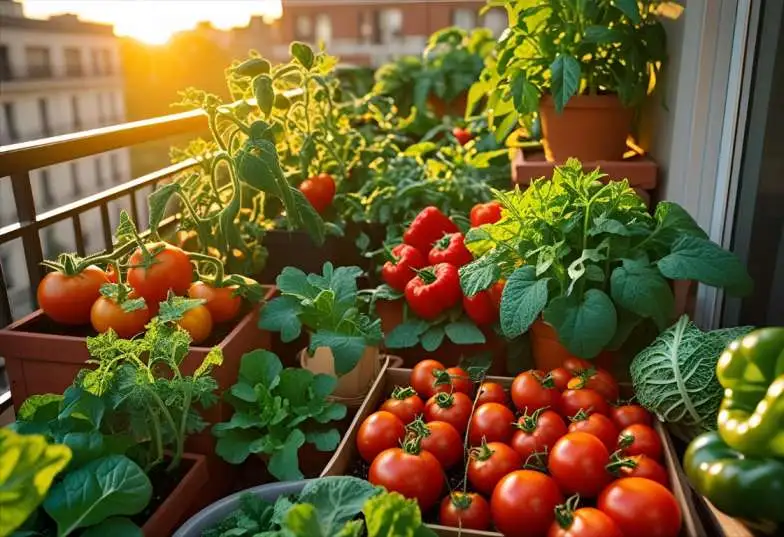
Top 5 Balcony-Friendly Vegetables
If you’re just starting, focus on vegetables that don’t need much space or special equipment. Here are five great options to consider:
- Cherry Tomatoes – These small, colorful tomatoes grow well in pots and produce a steady harvest all season.
- Leafy Greens – Lettuce, spinach, and kale thrive in shallow containers and can be picked as needed.
- Chili Peppers – Perfect for warm balconies, chili plants stay compact and yield lots of peppers.
- Radishes – Fast-growing and fun to harvest, radishes mature in just a few weeks.
- Herbs – Basil, mint, and coriander are essential for fresh meals and grow easily in small pots.
Choosing the right crops is key to making your DIY balcony vegetable garden ideas simple and satisfying. Start small, and as you gain confidence, try adding more varieties. If you’d like detailed vegetable growing guides, check the Royal Horticultural Society’s advice.
Seasonal Planting Guide
Timing matters when you plan your balcony garden. Each vegetable has a preferred season for planting and harvesting:
- Cool Season (October–February): Lettuce, spinach, radish, and coriander.
- Warm Season (March–June): Tomatoes, peppers, basil, and cucumber.
- Monsoon Season (July–September): Beans, okra, and gourds (if your balcony gets good drainage).
Always check seed packets or trusted gardening websites to confirm the best time to sow each crop. For India’s varied climates, local agricultural departments often share free guides with planting calendars.
With careful planning, your DIY balcony vegetable garden ideas will produce fresh vegetables almost year-round. Not only will you enjoy delicious homegrown food, but you’ll also experience the joy of watching your plants thrive season after season.
Essential Care and Maintenance Tips
Once your plants are settled, regular care will help your DIY balcony vegetable garden ideas bloom into success. A little daily attention goes a long way to keep your vegetables healthy and productive.
Watering and Feeding Basics
Watering and Feeding Basics
Balcony gardens often dry out faster than ground gardens. Here are some simple tips to keep your plants healthy:
Check Soil Moisture Daily
- Insert your finger about 1 inch deep into the soil.
- If it feels dry, it’s time to water.
Use a Gentle Watering Method
- Choose a watering can with a soft spout.
- This prevents disturbing young seedlings.
Water at the Right Time
- Early morning or late evening is best.
- Less moisture evaporates, so your plants stay hydrated.
Feed Regularly
- Every 2–3 weeks, apply a balanced liquid fertilizer or compost tea.
- Always read the product label and follow the instructions carefully.
Avoid Overfeeding
Too much fertilizer can harm roots and stunt growth.
Consistent watering and feeding will keep your DIY balcony vegetable garden ideas healthy, green, and thriving. For more scientific insights into plant care, visit the University of California Agriculture resources.
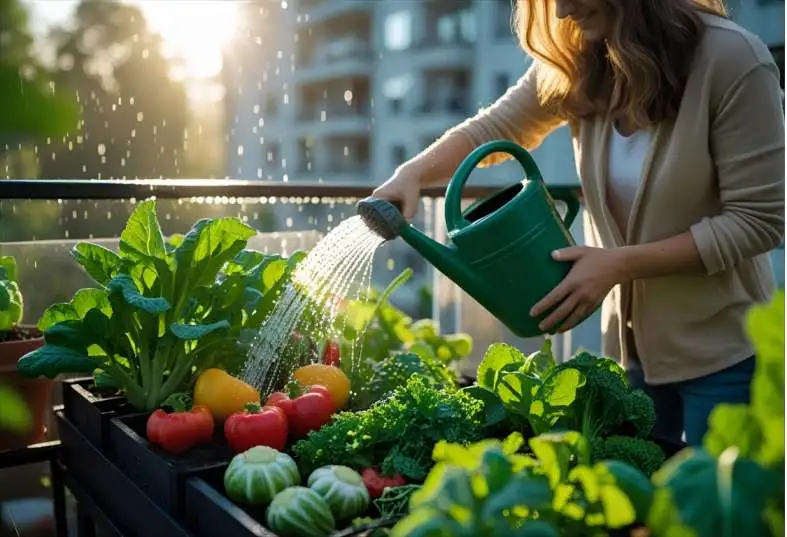
Pest Prevention and Natural Solutions
Even a small balcony garden can attract pests like aphids, mealybugs, and caterpillars. Luckily, there are safe, natural ways to protect your plants without using harsh chemicals.
- Inspect your plants regularly. Look under leaves for insects or eggs.
- Use neem oil spray. This natural product helps control many pests without harming beneficial insects.
- Encourage friendly insects. Ladybugs and lacewings eat harmful bugs.
If you notice signs of disease, such as yellowing leaves or black spots, remove affected parts immediately to prevent spreading. Clean your tools and containers often to keep your garden hygienic.
By following these simple care tips, you’ll reduce problems and enjoy a beautiful, productive harvest. Good maintenance is the heart of any successful DIY balcony vegetable garden project.
Harvesting and Enjoying Your Produce
One of the most rewarding parts of exploring DIY balcony vegetable garden ideas is picking fresh vegetables you grew yourself. Harvesting at the right time ensures the best flavor and keeps your plants producing.
When and How to Harvest
Different vegetables have different signs that they’re ready to pick:
- Leafy greens like spinach and lettuce are best harvested when the leaves are tender and about 4–6 inches long.
- Tomatoes should be fully colored and slightly soft to the touch.
- Chili peppers can be picked green or left to ripen red, depending on your taste.
Always use clean scissors or garden shears to avoid damaging the plant. Harvest gently to encourage new growth.
If you’re unsure whether something is ready, it’s better to pick a little early than wait too long. Overripe vegetables can lose their flavor or attract pests. With a bit of practice, you’ll get better at spotting the perfect moment.
Following these tips will make your DIY balcony vegetable garden ideas more satisfying and help you build confidence as a gardener. You can explore more balcony gardening ideas at Gardening Know How.
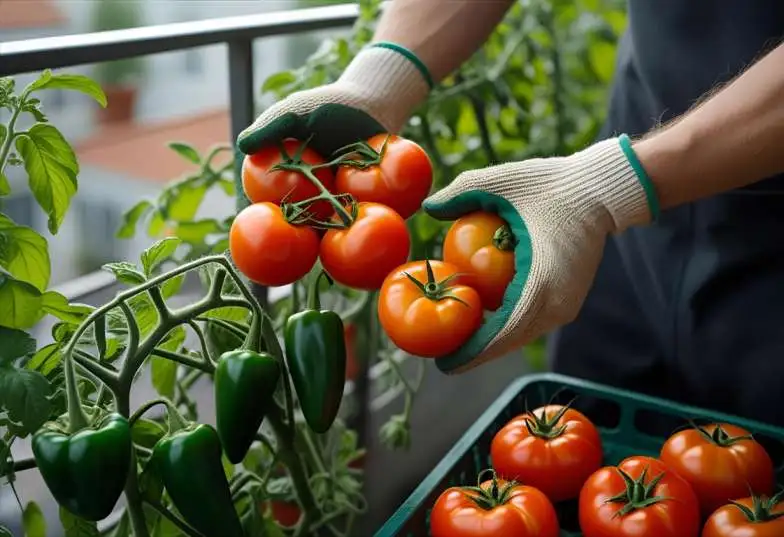
Storing and Using Your Vegetables
After harvesting, store your vegetables properly to keep them fresh:
- Leafy greens should be washed, dried, and kept in airtight containers in the refrigerator.
- Tomatoes and peppers can stay at room temperature if you plan to use them within a few days.
- Herbs last longer when placed in a glass of water like a bouquet.
Cooking with homegrown produce is a joy. Fresh lettuce turns any meal into a celebration, and herbs picked minutes before cooking add incredible flavor.
Remember, these DIY balcony vegetable garden ideas are not only about saving money but also about creating a healthier lifestyle and a deeper connection to your food.
This content is for informational purposes only. Always use safe handling and storage practices when preparing homegrown vegetables.
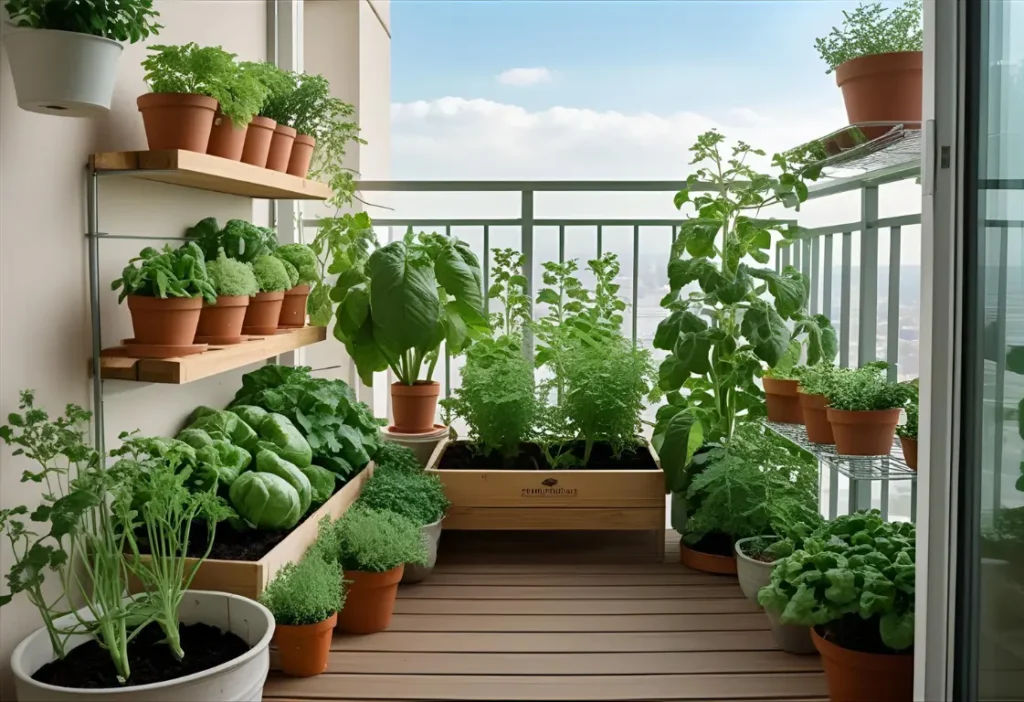
Conclusion
Starting your balcony garden might feel overwhelming at first, but with the right approach, it becomes an enjoyable and fulfilling part of daily life. By following these DIY balcony vegetable garden ideas, you can transform even a small outdoor space into a fresh food haven that brings beauty, flavor, and a sense of accomplishment.
From planning your layout to harvesting delicious vegetables, every step is an opportunity to learn and grow. You don’t need fancy equipment or a huge budget—just a little creativity and care.
Whether you’re a beginner or an experienced gardener, your balcony can become a place where you reconnect with nature and inspire your family to eat healthier.
Ready to start? Choose one simple idea from this guide today, and watch how quickly your green space comes to life.
This article is for educational and informational purposes only. Please follow safe gardening practices and consult local guidelines as needed. For step-by-step container gardening tutorials, visit The Spruce.
Frequently Asked Questions (FAQs)
What are the easiest vegetables to grow in a balcony garden?
Some of the easiest vegetables to start with are leafy greens, cherry tomatoes, chili peppers, and herbs. These plants don’t require much space and grow well in containers. When planning your DIY balcony vegetable garden ideas, start small and choose vegetables that match your local climate.
How much sunlight do balcony vegetables need?
Most vegetables need at least 4–6 hours of direct sunlight daily. If your balcony is shaded, try growing herbs like mint and coriander or leafy greens that tolerate less light. Observing your balcony’s sunlight patterns is the first step in successful DIY balcony vegetable gardening.
Can I grow vegetables on a balcony without soil?
Yes, you can explore hydroponic systems or cocopeat-based setups if you don’t want to use soil. However, these methods require more care and proper nutrients. Beginners often find it easier to start with simple containers and good-quality potting soil.
How do I prevent pests in my balcony vegetable garden?
Regularly check the leaves and stems for signs of insects, use natural sprays like diluted neem oil, and keep the area clean. Encouraging beneficial insects, such as ladybugs, also helps control pests without harsh chemicals.
Do balcony vegetable gardens need special fertilizers?
While you don’t always need special fertilizers, using a balanced organic liquid fertilizer or compost tea every 2–3 weeks will help your vegetables grow strong. Always follow product labels and avoid over-fertilizing.
How often should I water my balcony vegetables?
In hot weather, check soil moisture daily. Stick your finger about an inch into the soil—if it feels dry, water thoroughly. Early morning or evening is best to reduce evaporation.
Can I grow vegetables on a rented apartment balcony?
Absolutely. Many DIY balcony vegetable garden ideas use portable containers, grow bags, or vertical planters that can be moved when you relocate. Just be sure to protect the floor and follow any building rules.
Download DIY Balcony Vegetable Garden as a PDF
Want to learn more about Balcony Vegetable Garden?
- The Complete Guide to Balcony Vegetables for Beginners
- The Ultimate Guide to Creating a Thriving Balcony Garden
- Balcony Vegetable Garden Kit
About the Author
Soumen Chakraborty is an environmental writer and eco-living advocate who helps Indian households start sustainable journeys. He’s the founder of greenglobe25.in and writes beginner-friendly guides on zero-waste living, balcony gardening, and eco products.
Follow on Facebook: ecoplanet25
Ready to Grow Your Food?
Start today with one simple step from these DIY balcony vegetable garden ideas. Whether you plant a single pot of herbs or transform your whole balcony, you’ll enjoy fresh, delicious produce right at home.
Share this guide with a friend, leave a comment about your gardening plans, or subscribe for more easy tips on sustainable living!

